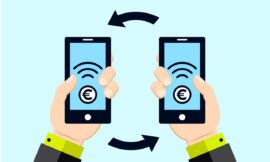In today’s digital world, coding has become an essential skill for the future. But when we think about coding, complex lines of text often come to mind, which can be overwhelming for kids. That’s where block coding comes in! It’s a fun, visual, and beginner-friendly way for kids to learn programming concepts without dealing with complicated syntax.
Whether your child is interested in video games, robotics, or creating animations, block coding provides an engaging introduction to the world of coding. Let’s dive into what block coding is, why it’s important, and how kids can benefit from it.
What Is Block Coding?
Block coding is a method of programming where kids use drag-and-drop blocks instead of writing lines of code. Each block represents a specific action or command, like “move forward,” “repeat,” or “play sound.” By stacking these blocks together like puzzle pieces, kids can create programs, games, or animations.
The visual interface of block coding eliminates the need to memorize coding syntax, making it easier for beginners to grasp programming logic. Platforms like Scratch and Blockly have popularized block coding for kids, enabling them to create projects without frustration.
For example, if a child wants to make a character move across the screen, they can simply drag a “move” block and connect it to a “repeat” block. This simplicity makes block coding an ideal entry point for young learners.
Why Is Block Coding Important for Kids?
Block coding is important because it introduces kids to programming concepts in a simple and engaging way. It bridges the gap between basic problem-solving skills and advanced coding knowledge.
Here are a few reasons why block coding matters:
- Easy to Learn: Kids can focus on logic and creativity rather than getting stuck on syntax errors.
- Engages Young Minds: The colorful, visual interface keeps kids interested in learning.
- Builds Foundational Skills: It prepares kids for text-based programming languages like Python or JavaScript.
Block coding also teaches kids critical thinking, creativity, and persistence—skills that are valuable in both academics and future careers.
How Does Block Coding Work?
Block coding works by using a graphical programming environment where commands are represented as blocks. These blocks can be dragged, dropped, and connected to form a sequence of instructions.
Here’s how it typically works:
- Choose a Platform: Kids start with platforms like Scratch or Blockly.
- Drag and Drop Blocks: Each block performs a specific function, such as moving an object, playing a sound, or repeating an action.
- Stack Blocks Together: Blocks fit together like puzzle pieces to create a logical flow.
- Run the Code: Once the blocks are arranged, kids can run the program to see their creation in action.
For example:
- A “move forward” block might move a character 10 steps.
- A “repeat” block can make the action happen multiple times.
By experimenting with different blocks, kids learn how to break down problems into smaller steps and think logically.
Block Coding vs. Text-Based Coding
Benefits of Block Coding
- User-Friendly Interface: No need to type complex code; blocks are intuitive and easy to use.
- Fewer Errors: Kids don’t face syntax errors, which are common in text-based coding.
- Immediate Results: Kids can see their code come to life instantly, keeping them motivated.
Differences from Text-Based Coding
| Block Coding | Text-Based Coding |
| Visual, drag-and-drop blocks | Typed programming commands |
| Easier for beginners | Requires memorizing syntax |
| Focuses on logic and flow | Focuses on structure and rules |
| Ideal for kids and beginners | Better for advanced learners |
Block coding provides a stepping stone to text-based coding. Once kids master block-based programming, transitioning to languages like Python becomes much easier.
Benefits of Teaching Kids Block Coding
1. Improves Problem-Solving Skills
Block coding encourages kids to break down complex problems into smaller steps. By arranging blocks logically, they develop critical problem-solving abilities.
2. Enhances Creativity and Logical Thinking
Whether they’re creating games or animations, block coding allows kids to unleash their creativity while following logical sequences.
3. Builds Confidence in Technology
By learning block coding, kids gain confidence in using technology and understanding how digital tools work.
Block coding isn’t just about programming; it’s about preparing kids to think like innovators and problem-solvers.
Popular Block Coding Platforms for Kids
1. Scratch
Developed by MIT, Scratch is one of the most popular block coding platforms. It allows kids to create animations, games, and stories by stacking colorful blocks.
2. Blockly
Blockly, by Google, introduces coding concepts through puzzles and challenges. It’s ideal for kids who enjoy interactive learning.
3. Code.org
Code.org offers block coding activities and tutorials designed for beginners. It’s widely used in schools to introduce coding.
4. Tynker
Tynker is a platform that combines block coding with games, storytelling, and robotics. It’s perfect for kids who want a hands-on coding experience.
5. MIT App Inventor
For older kids, MIT App Inventor allows them to create mobile apps using block coding.
How to Get Started with Block Coding?
1. Choosing the Right Platform
Start with beginner-friendly platforms like Scratch or Code.org.
2. Setting Up the Software
Most block coding platforms are web-based, so no installation is needed.
3. Simple Projects to Begin With
- Create a simple animation
- Build a basic game such as Flappy Bird in Scratch
- Develop a storytelling project
What Age Should Kids Start Block Coding?
Block coding is designed to be accessible to kids as young as 5 to 6 years old. At this age, children can start with simple drag-and-drop platforms like ScratchJr, which uses visual blocks to teach basic coding concepts.
Here’s a breakdown of age-appropriate block coding:
- Ages 5-7: Introduce platforms like ScratchJr or Code.org’s beginner puzzles. These focus on basic commands like movement and sound.
- Ages 8-10: Kids can explore Scratch and Blockly, where they can create games, animations, and interactive stories.
- Ages 11-13: Older kids can move to advanced platforms like Tynker or MIT App Inventor, where they can build mobile apps or even integrate coding with robotics.
Starting early helps children develop logical thinking and problem-solving skills, but it’s never too late to learn. Block coding grows with the child, offering more complex challenges as they progress.
Fun Block Coding Projects for Kids
Introducing kids to block coding through fun projects keeps them engaged and excited. Here are a few creative ideas:
1. Simple Games
- Maze Game: Kids can program a character to navigate a maze using “move” and “if-then” blocks.
- Catch the Ball: A game where players catch falling objects, teaching kids about loops and conditional statements.
2. Animation Projects
- Create a short animated story where characters move, talk, and interact. Kids can use Scratch to animate scenes and bring their imagination to life.
3. Storytelling with Code
Platforms like Scratch allow kids to create interactive stories by combining dialogue, animations, and sound effects.
4. Robotics Integration
Using platforms like Tynker, kids can control robots such as LEGO Mindstorms or Sphero through block coding. This combines programming with hands-on building, making it even more exciting.
These projects not only teach coding but also spark creativity and innovation in young learners.
Block Coding and STEM Education
Block coding plays a significant role in STEM education (Science, Technology, Engineering, and Mathematics). It bridges the gap between abstract concepts and real-world applications.
Here’s how block coding integrates into STEM:
- Science: Kids can simulate experiments or animations that explain scientific concepts.
- Technology: Block coding teaches kids how software and digital tools work.
- Engineering: Kids can design and program robots, learning engineering principles.
- Mathematics: Block coding involves logical thinking, patterns, and sequences, reinforcing math skills like addition, subtraction, and loops.
By incorporating block coding into STEM education, kids develop critical 21st-century skills needed for future careers.
Common Challenges Kids Face in Block Coding
While block coding is beginner-friendly, kids may encounter a few challenges along the way:
1. Lack of Interest
Some kids may find coding boring or difficult initially. To overcome this, start with engaging projects like games or animations that align with their interests.
2. Overcoming Frustration
Coding involves trial and error, which can frustrate young learners. Encourage them to think of coding as solving a puzzle and celebrate small wins.
3. Limited Access to Resources
Not all families or schools have access to computers or coding platforms. Free tools like Scratch and Code.org make block coding accessible to everyone with an internet connection.
By addressing these challenges, parents and teachers can ensure a positive coding experience for kids.
How Parents and Teachers Can Support Kids?
Parents and teachers play a crucial role in helping kids succeed in block coding. Here’s how they can provide support:
1. Encouraging Exploration
Allow kids to explore coding platforms at their own pace. Let them experiment, make mistakes, and learn through hands-on projects.
2. Providing Guidance and Tools
- Introduce beginner-friendly platforms like Scratch or Code.org.
- Offer tutorials or online courses to help kids understand coding concepts.
3. Incorporating Coding in Daily Learning
Integrate block coding into school curriculums or extracurricular activities. Teachers can assign fun coding projects as part of math or science lessons.
By creating a supportive environment, parents and teachers can inspire kids to enjoy coding and build essential skills for the future.
Why Block Coding Prepares Kids for the Future
Block coding equips kids with skills that are essential for future careers in technology, engineering, and beyond. Here’s why it’s so important:
- Teaches Problem-Solving: Kids learn to approach challenges logically and think critically.
- Builds Confidence in Technology: By creating projects, kids develop confidence in using and understanding digital tools.
- Prepares for Advanced Coding: Block coding provides a foundation for text-based programming languages like Python, JavaScript, and Java.
In a world driven by technology, block coding empowers kids to become creators rather than just consumers of technology.
Block Coding Success Stories
Block coding has inspired countless young learners to pursue careers in programming and technology. For example:
- A 10-year-old Scratch programmer created an educational game that teaches math to younger kids.
- Young robotics enthusiasts have used block coding to program robots for competitions like FIRST LEGO League.
These success stories show that block coding can unlock a child’s potential and set them on a path toward innovation and success.
Conclusion
Block coding is a fun, interactive, and beginner-friendly way for kids to learn programming through different online coding courses for kids. By using drag-and-drop blocks, kids can create games, animations, and even control robots without worrying about complex syntax. Platforms like Scratch, Blockly, and Code.org make coding accessible and enjoyable for kids of all ages.
Teaching block coding not only prepares kids for future careers but also helps them develop essential skills like problem-solving, creativity, and logical thinking. Whether your child is 5 or 15, block coding is a fantastic way to introduce them to the world of technology.
For more information and guide about different types of news you can check it out at BioneersLive.
FAQs
What is block coding in simple terms?
Block coding is a visual way of programming where kids use drag-and-drop blocks instead of writing lines of code. Each block represents a specific action or command.
What is the best age for kids to start block coding?
Kids can start block coding as early as 5-6 years old using platforms like ScratchJr, which are designed for beginners.
Which platforms are best for block coding?
Some of the best platforms include Scratch, Blockly, Code.org, Tynker, and MIT App Inventor.
How does block coding benefit kids?
Block coding helps kids develop problem-solving, logical thinking, creativity, and confidence in technology.
Can block coding lead to text-based programming?
Yes, block coding provides a strong foundation for text-based programming languages like Python and JavaScript.


